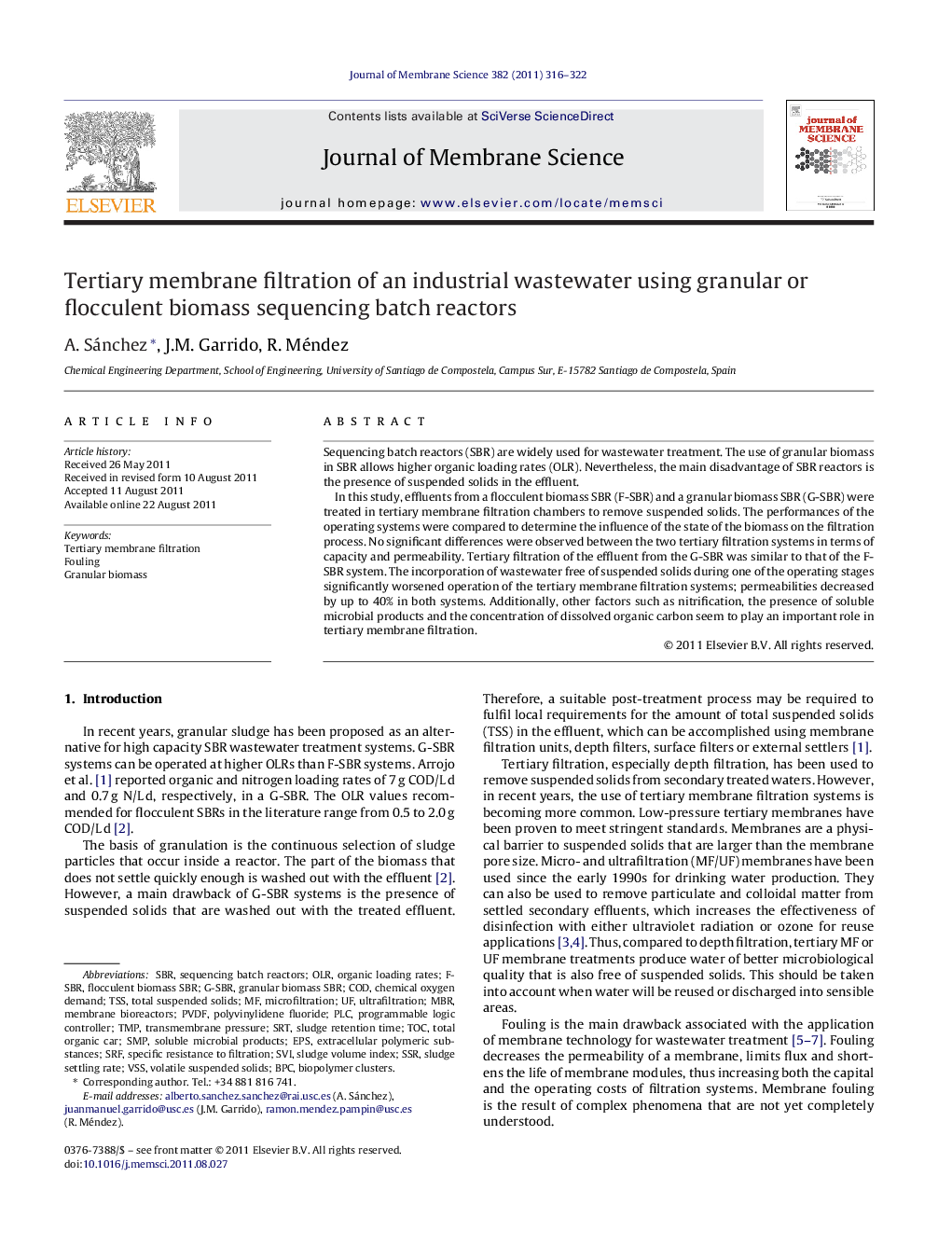| Article ID | Journal | Published Year | Pages | File Type |
|---|---|---|---|---|
| 635671 | Journal of Membrane Science | 2011 | 7 Pages |
Sequencing batch reactors (SBR) are widely used for wastewater treatment. The use of granular biomass in SBR allows higher organic loading rates (OLR). Nevertheless, the main disadvantage of SBR reactors is the presence of suspended solids in the effluent.In this study, effluents from a flocculent biomass SBR (F-SBR) and a granular biomass SBR (G-SBR) were treated in tertiary membrane filtration chambers to remove suspended solids. The performances of the operating systems were compared to determine the influence of the state of the biomass on the filtration process. No significant differences were observed between the two tertiary filtration systems in terms of capacity and permeability. Tertiary filtration of the effluent from the G-SBR was similar to that of the F-SBR system. The incorporation of wastewater free of suspended solids during one of the operating stages significantly worsened operation of the tertiary membrane filtration systems; permeabilities decreased by up to 40% in both systems. Additionally, other factors such as nitrification, the presence of soluble microbial products and the concentration of dissolved organic carbon seem to play an important role in tertiary membrane filtration.
► We compared the effluents from tertiary membrane filtration systems with flocculent and granule SBRs. ► The aggregation state of biomass did not influence membrane performance. ► Nitrification and the presence of suspended solids in the influent were key factors. ► Organic carbon concentration is suggested as an indicator of membrane fouling.
